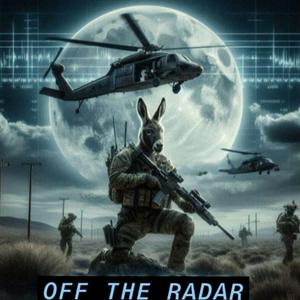Commander’s Edge: Synchronizing Operations Through Fighting Products Pt 1 (Ep. 35)
This is part 1 of a 2-part interview focused on Fighting Products that are useful and essential to the planning and execution of Multi-Domian Large Scale Combat Operations with the Joint and Combined Force. A fighting product is a visual product that doctrine desires created by a staff to enable the commander to visualize the battlefield, understand the operational environment, and synchronize action in time and space. This supports the commander’s decision-making process and ensures common understanding throughout the unit. This interview covers the core fighting products that ARSOF Company staffs and above should be producing, additional products that are highly useful, and methods of displaying and sharing these products to increase shared understanding at the headquarters and up and down the chain of command. These fighting products have value at the Combat Training Centers and across the spectrum of operations from competition to conflict.
About the Guest:
MAJ Philip Ficken: Phil Ficken is the current Special Operations Training Detachment AOB-West Officer in Charge aka Commander. Prior to the he served as the Exercise Control Officer and J3 Operations Officer for SOTD AOB-W. Prior to that He served in various roles in 5th Special Forces Group including Company Commander, Staff positions, and Detachment Commander.
About the Host:
CPT Weston Rich is the of SOF Plans Chief at the NTC and former member of Burro Team, the Special Operations Training Detachment OC/T Team at NTC. Prior to his time at NTC, Weston served as a Detachment Commander with 1st SFG (A) and as an Infantry Officer with 3-509th IN (ABN)/4/25 ID (now part of 2/11 ABN DIV). Following his time at NTC, Weston will attend Carnegie Mellon University with a follow-on assignment to Army Futures Command.
This episode covers:
- MAJ Ficken conducted an NTC rotation as an AOB Commander and was coached on producing these same fighting products
- Fighting products => enable commanders to visual / understand the operational environment and synchronize actions
- 6 essential fighting products: Common Operating Picture / Common Intelligence Picture (COP / CIP), Execution Matrix, Information Collection Matrix (ICM), High Pay Off Target List (HPTL), Target Sync Matrix / Fire Support Execution Matrix (TSM / FSEM), Logistics Status Report (LOGSTAT)
1. COP / CIP: military symbols drawn over top of a map sheet or satellite imagine depicting friendly units, enemy units, obstacles, maneuver, significant actions/events, critical infrastructure etc.
2. Execution Matrix: graphs operations along time, y-axis is list of operations, x-axis is time, map out operations out 72 hours at a minimum, update constantly as battlefield changes, improve synchronization, identify decision points
3. ICM: maps out how friendly forces will answer intelligence requirements by time and method of collection
4. HPTL: prioritize list of targets whose loss will significantly contribute to friendly success, must be able to be acquired and engaged by your unit
5. TSM / FSEM: outlines how to Decide Detect Deliver and Assess on targets
6. LOGSTAT: report that provides the current on hand supply and forecasted future logistical requirements by commodity
- Additional useful fighting products: Execution Checklist, Air Hope Timelines, Light and Weather Data, Information Requirements (CCIR, FFIR, PIR), Task Organization, Combat Power
Please like, subscribe, and share these episodes with ARSOF any conventional Soldiers and Leaders to spread the knowledge of ARSOF in LSCO.
To provide feedback please email the host, CPT Rich, at
[email protected].
Produced, edited, and sound engineering by Micah Popp of Salty Sounds


